Los Altos History Museum
Los Altos History Museum
On Saturday we got a very brief let-up from the storm that lashed the Bay Area with heavy rain and winds, a tornado, and a waterspout. D. and I chose an indoor activity just to be safe, and we went to the Los Altos History Museum, where I took these pics.
Rainy, gloomy day.
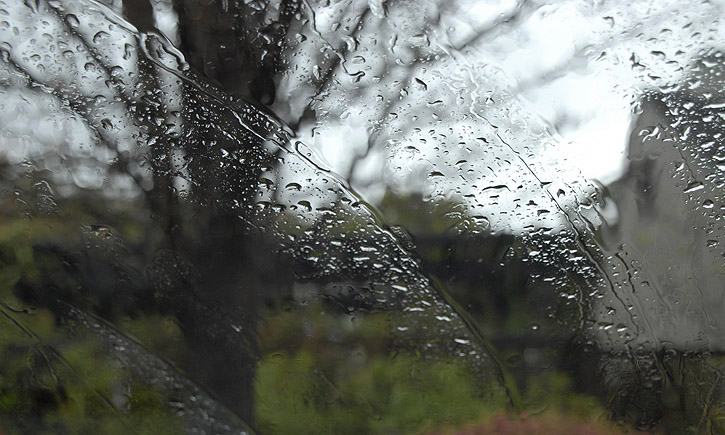
The museum's current exhibit is Touching Lives: The Duvenecks of Hidden Villa. Originally from Boston, they left behind the aristocratic New England society of the 1920s to start a ranch in the hills above Los Altos and became social activists, progressive educators, and ardent environmentalists.
In addition to turning their ranch into an environmental education preserve, the Duvenencks founded a progressive school in a nearby town and the Loma Prieta chapter of the Sierra Club. Their interests in social justice led them to open the first youth hostel on the West Coast and the first interracial summer camp in the U.S. They offered hospitality to American Indians and helped Japanese-Americans interned during World War II. They also started an organization that helps the families of prison inmates. This exhibit honors their achievements and gives us a peek into daily life at Hidden Villa.
This is a life-size photo of the grand fireplace at Hidden Villa (life-size photo coincidentally taken by D.), mounted on the museum wall.
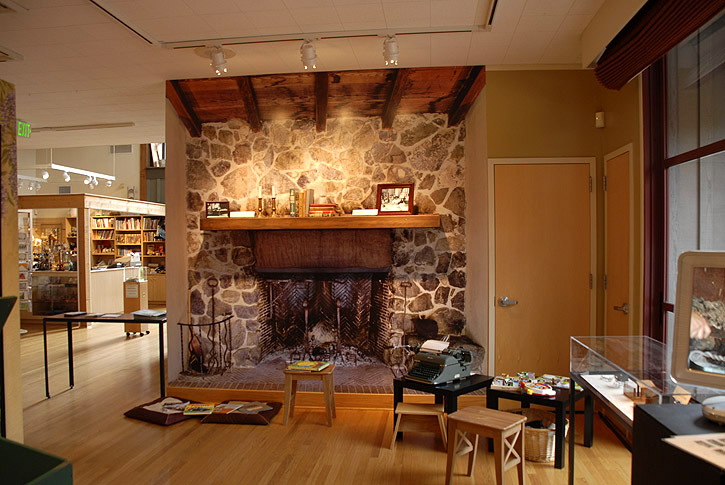
The mantel is real, but the rest of it is D's photograph. It looks 3-D, doesn't it?
Some of the (real) books on the (real) mantel.
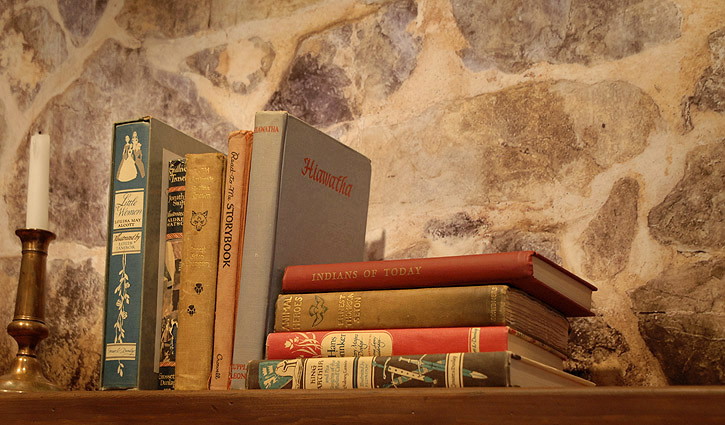
One presumes these are some of the actual books the Duvenecks had on their mantel at Hidden Villa.
This is Charlie. He liked to chase cars and dogs and anything that came up the road to the ranch. It was a turf thing, apparently.
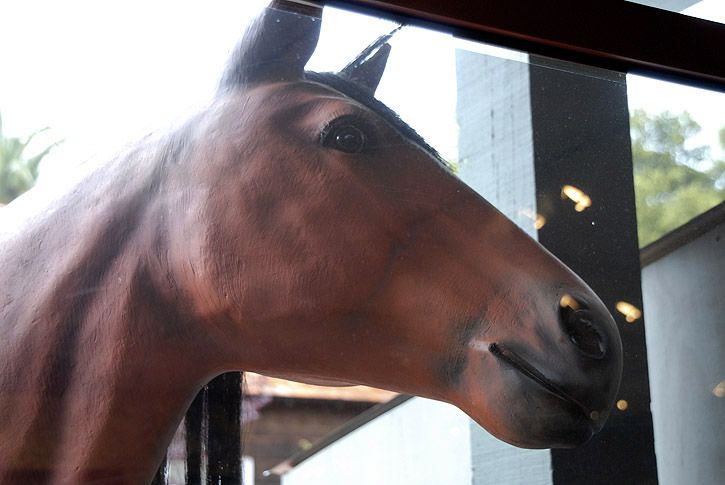
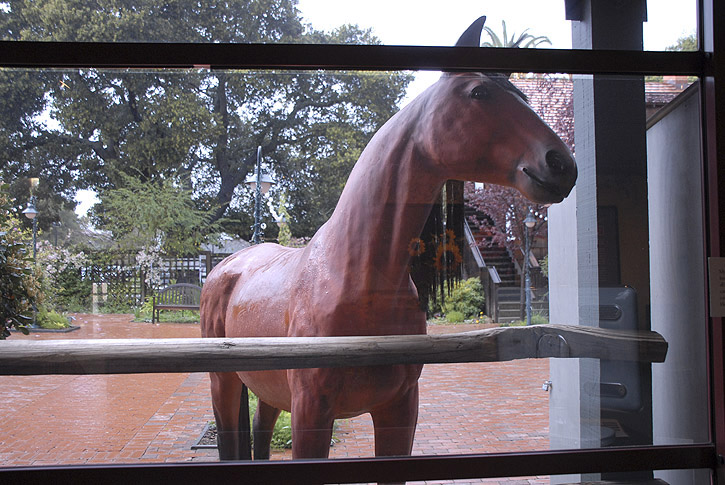
This is the Christopher Award Josephine Duveneck got in 1978. These awards salute media that “affirm the highest values of the human spirit.”
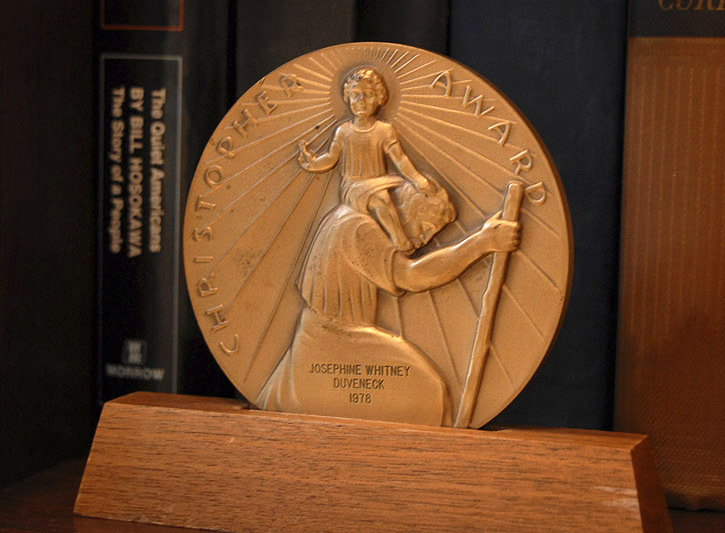
Some of Frank Duveneck's World War I Army field manuals.
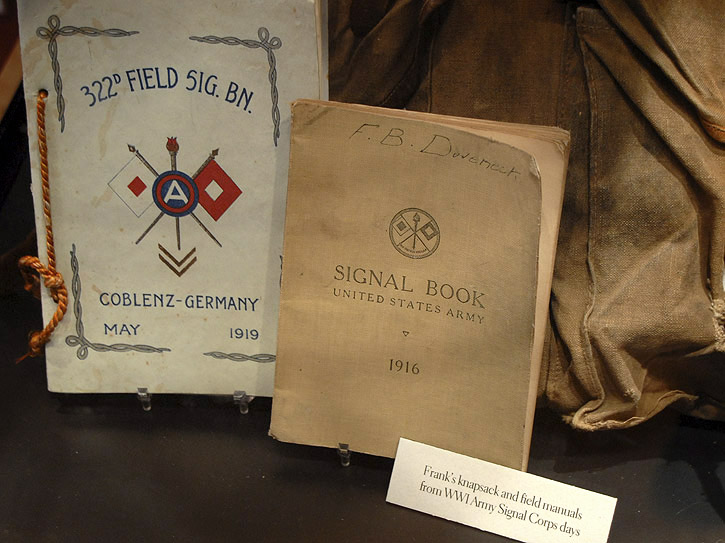
The Duvenecks worked to aid Japanese Americans when they were released from internment camps after World War II. This suitcase shows a sample of the things Japanese people brought with them to the camps.
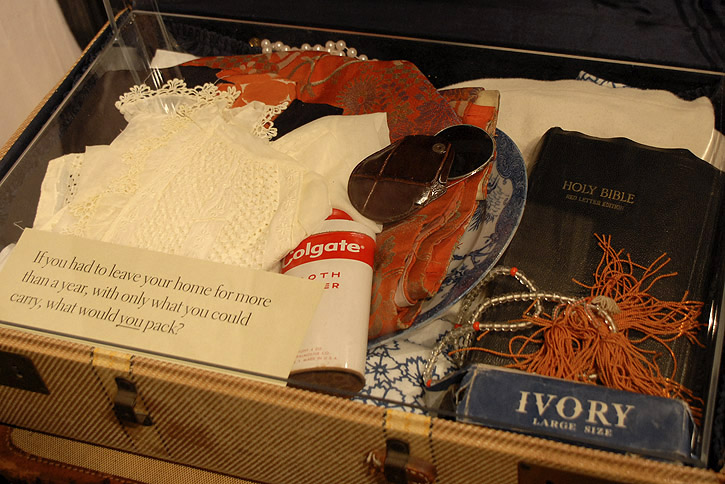
The Duvenecks were world travelers. The thumbtacks in this little globe show some of the places they've been.

A piece of stained glass from their dining room. It looks so 1970s.
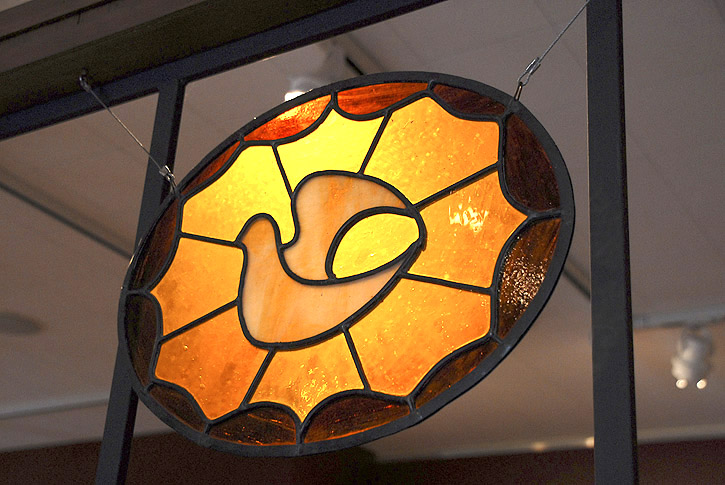
Part of a typical place setting in the Duveneck dining room.
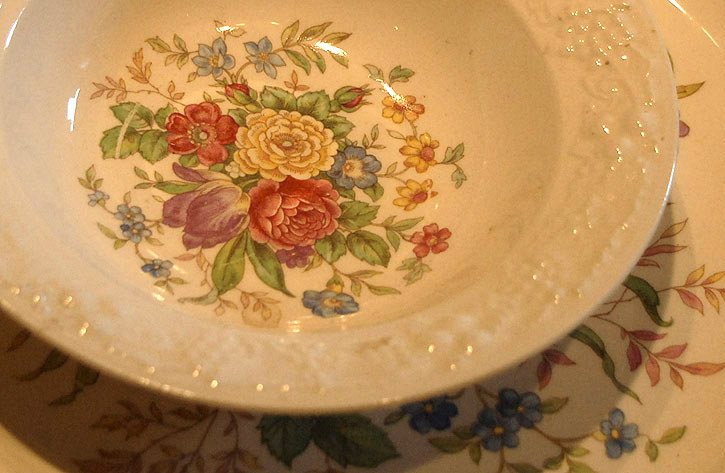
Hidden Villa is now a non-profit educational organization, dedicated to studying and sustaining the environment, and promoting social justice.
After we leave the Duveneck exhibit, we head upstairs to the permanent exhibit, "Crown of the Peninsula," and on the way pass an antique quilt.
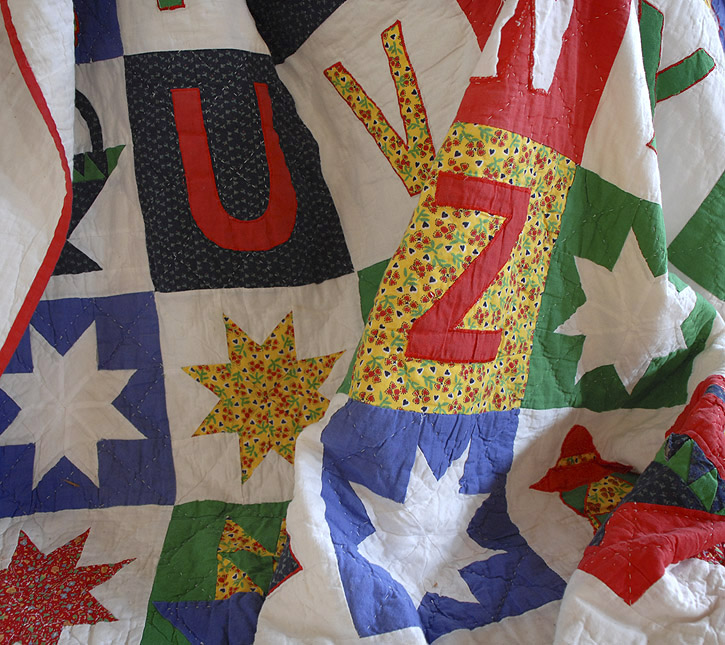
"The Crown of the Peninsula" examines how the land of Los Altos has been used over thousands of years from Ohlone times to the era of Silicon Valley businesses. We begin with the Costanoan Ohlone Indians, who lived here for thousands of years, barely altering the original landscape. This is a replica of one of their tule boats, made from tule rushes that grow in the marshes ringing San Francisco Bay.
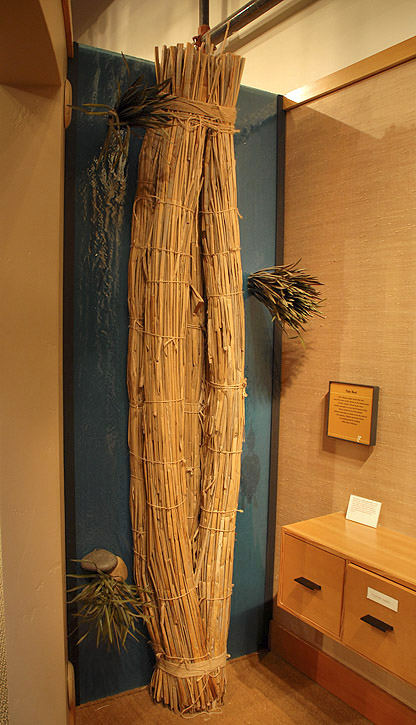
Yes, it's vertical.
Some stone tools used by the Ohlone.
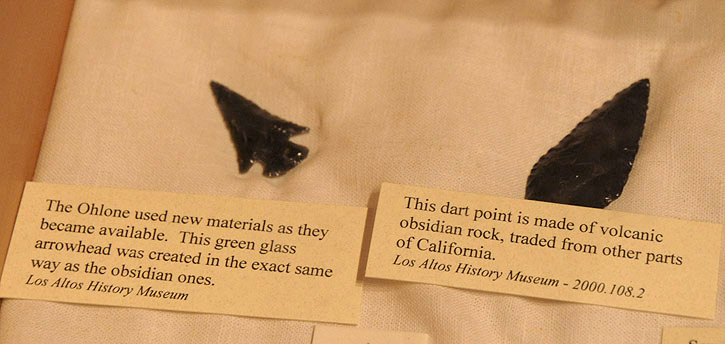
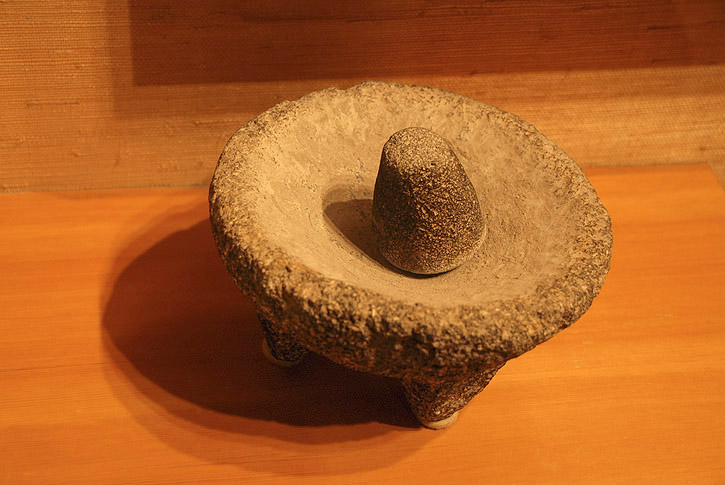
This map shows the different habitats in the local watershed, from the Santa Cruz Mountains to San Francisco Bay.
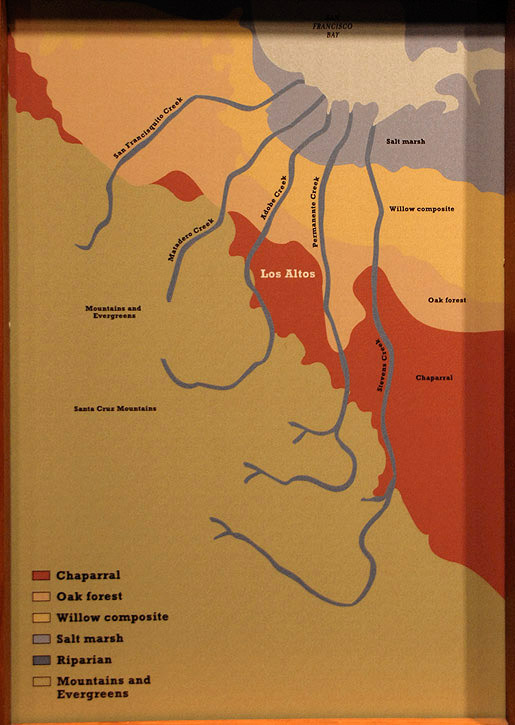
The arrival of the Spanish devastated the native culture and changed the face of the land. We see a couple of examples of items commonly found during the Spanish colonization and Mexican land grant eras.
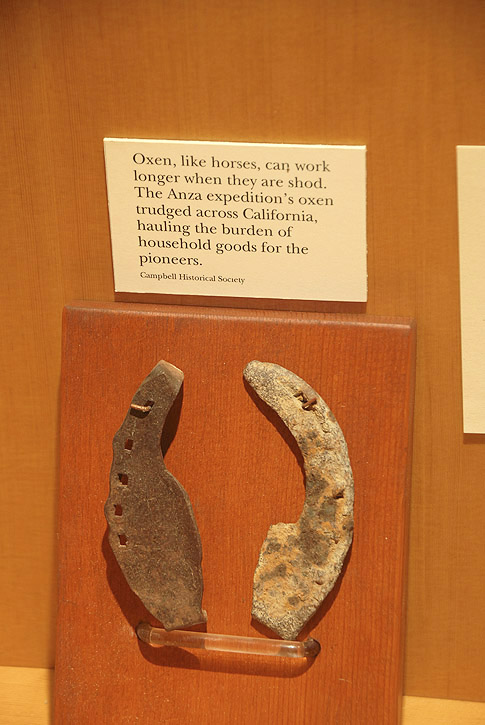
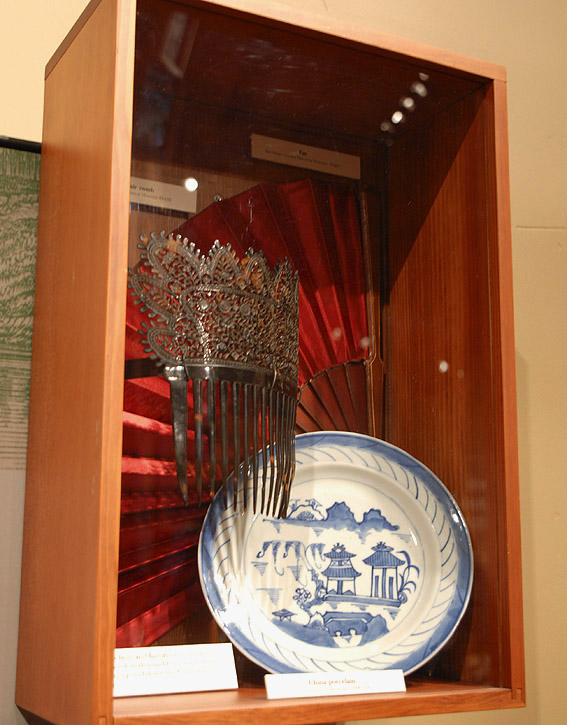
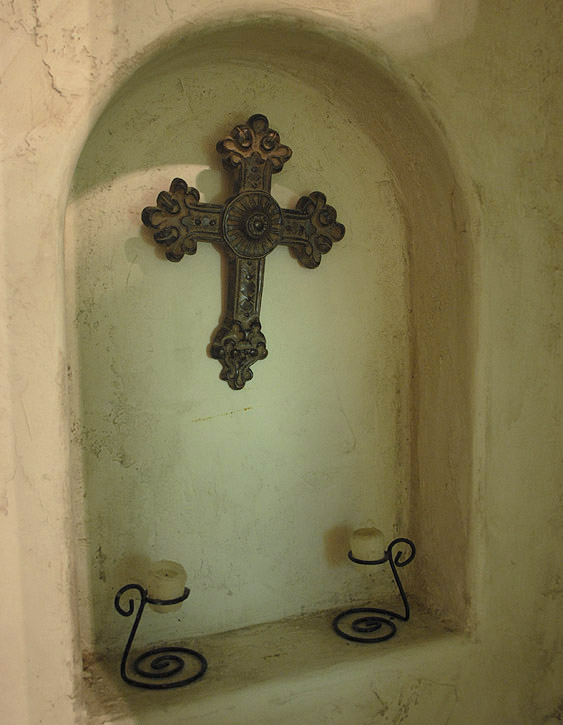
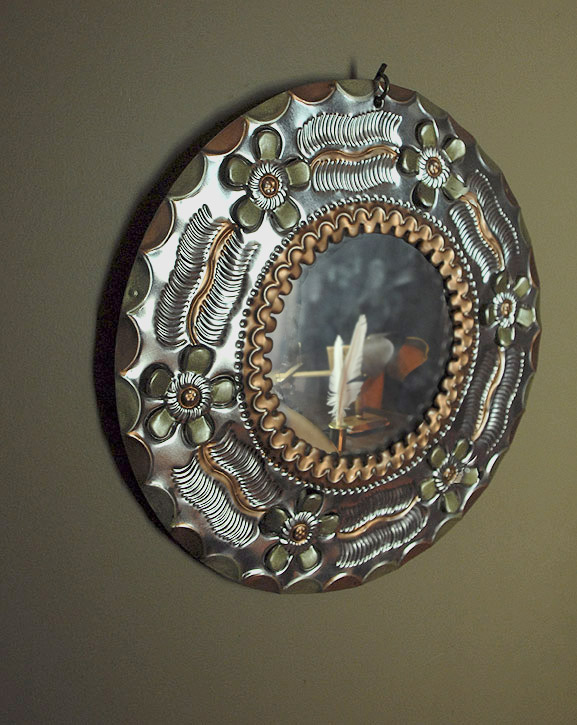
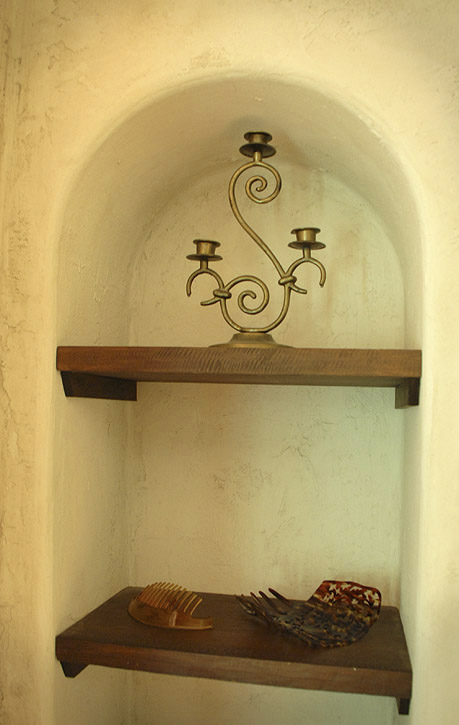
During the American era, ranches, orchards and the railways flourished. Apricot growing was big business in and around Los Altos leading up to World War II. Remnants of the original orchards still exist here and there.
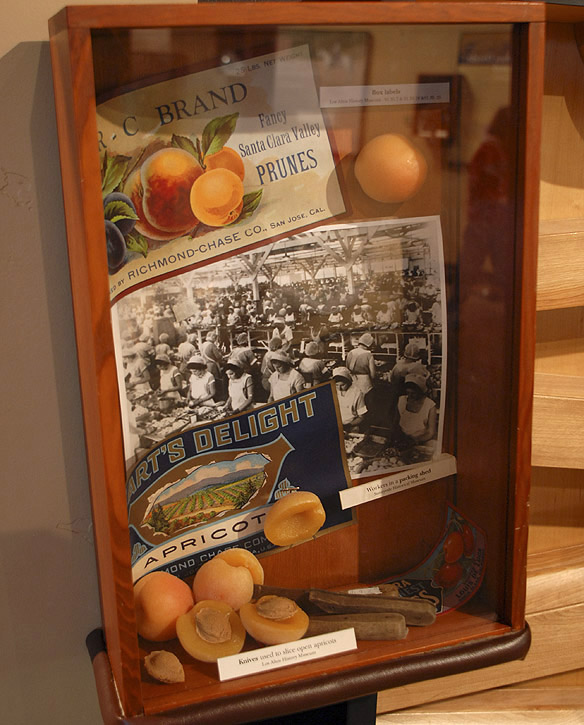
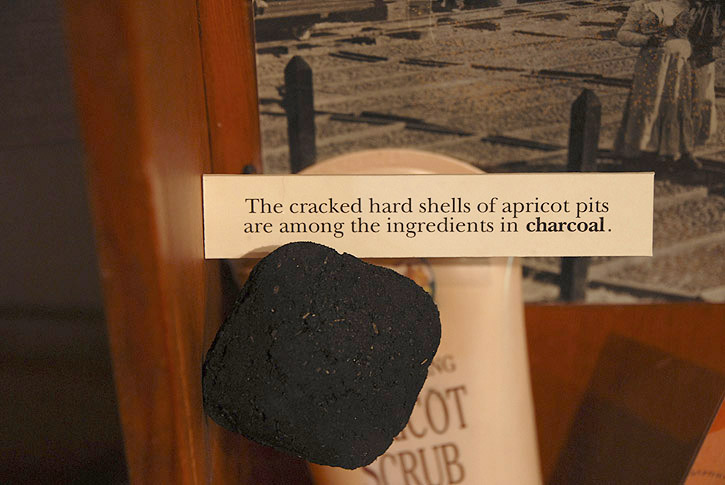
Here's a pic of some dapper guy. I don't know who he is or why his picture is here, but he is quite dapper.
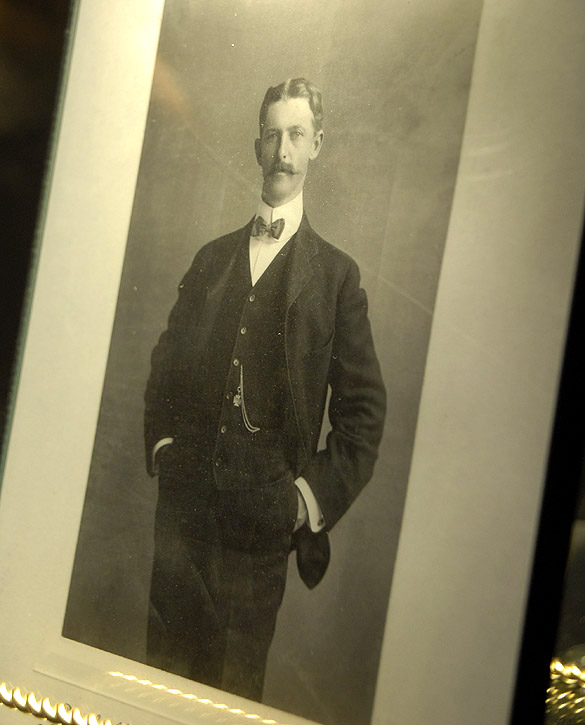
An early railroad map.
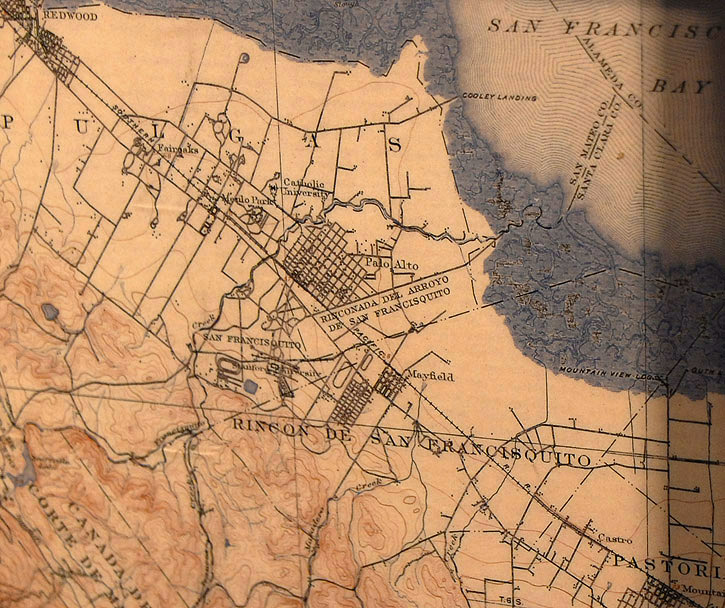
The arrival of the railroads had a dark side -- the unchecked power of the Southern Pacific railroad thwarted small land-ownership that was the intention of the Preemption and Homestead Acts. The railroad often drained the resources of farmers and shippers, driving them into bankruptcy. The last train to run through Los Altos was in 1964. The train tracks are now the site of Foothill Expressway.
During the Depression in the 1930s, the Altos Land Co. had a difficult time selling land. Since a lot was about the price of a set of dishes, the company conducted a promotional contest that took place in San Francisco movie theaters. The winner could choose a set of dishes or a piece of Los Altos land. Most people chose the dishes.
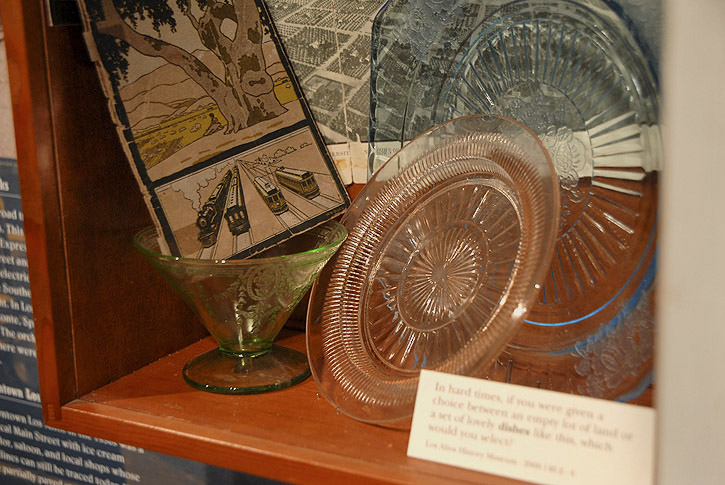
Wouldn't you like to be able to buy a plot of land for the price of a set of dishes?
As the town grew, so did controversy.
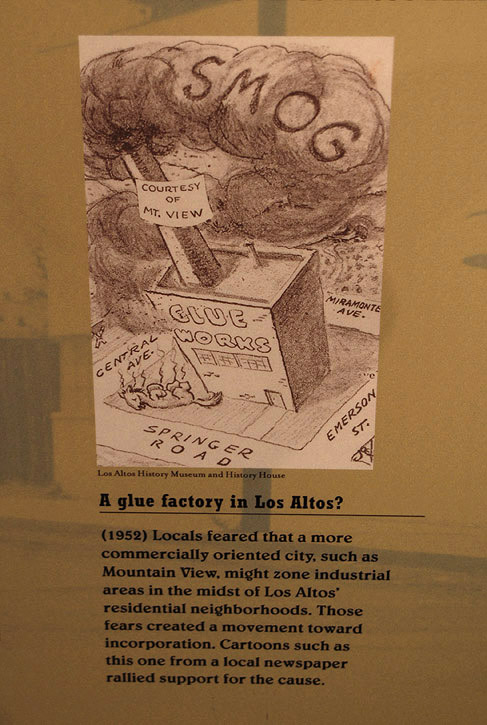
At the "family trees" exhibit featuring recent Silicon Valley residents who have played a role in transformed the area from ranches and orchards into what it is today, we see the Duvenecks in their later years.
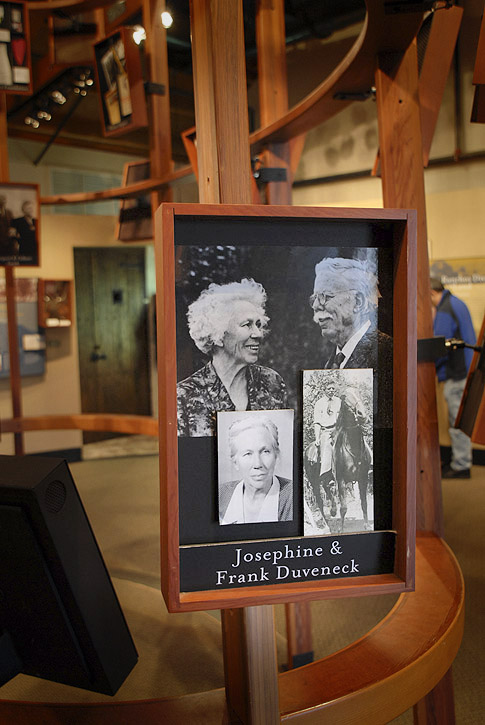
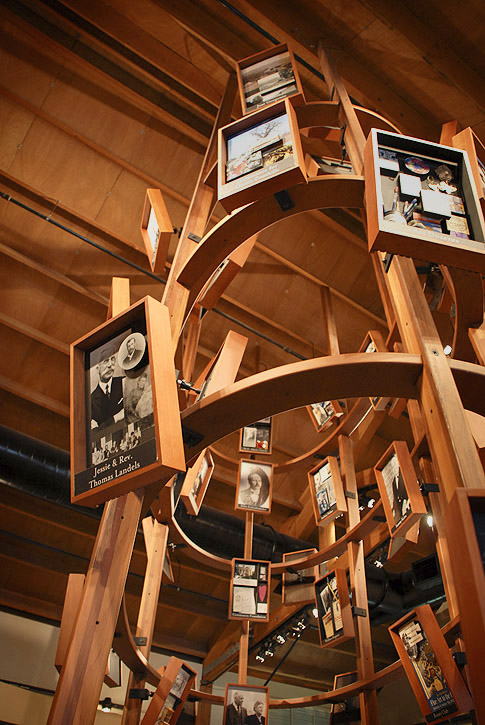
Then we move on to the heart of this exhibit -- a replica of downtown Los Altos in 1932 that features a working model railroad.
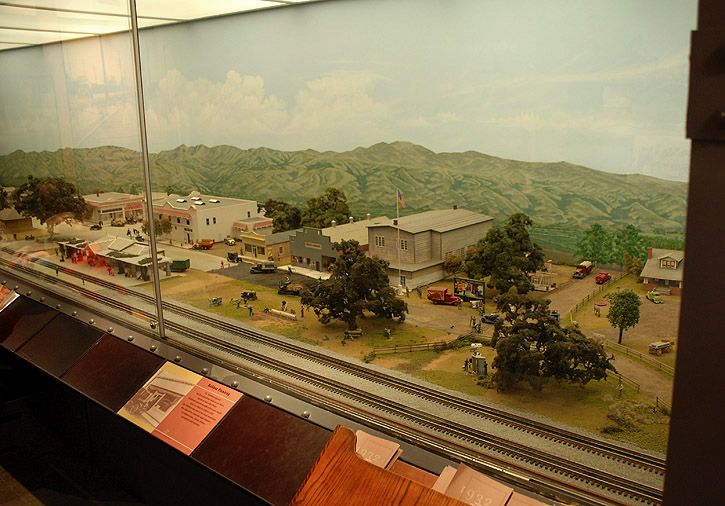
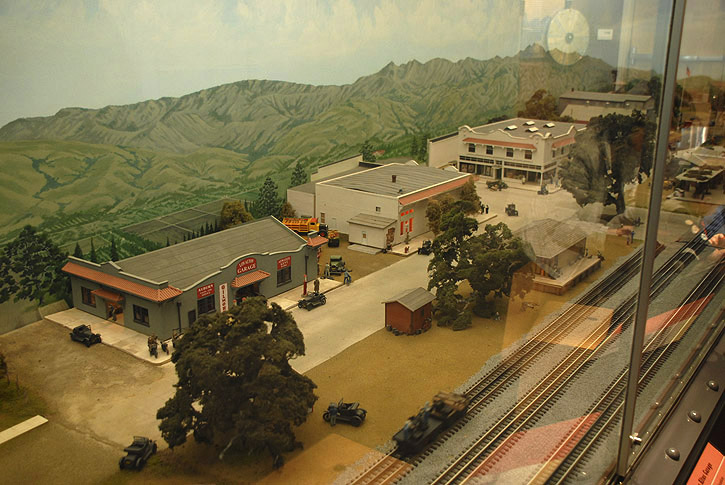
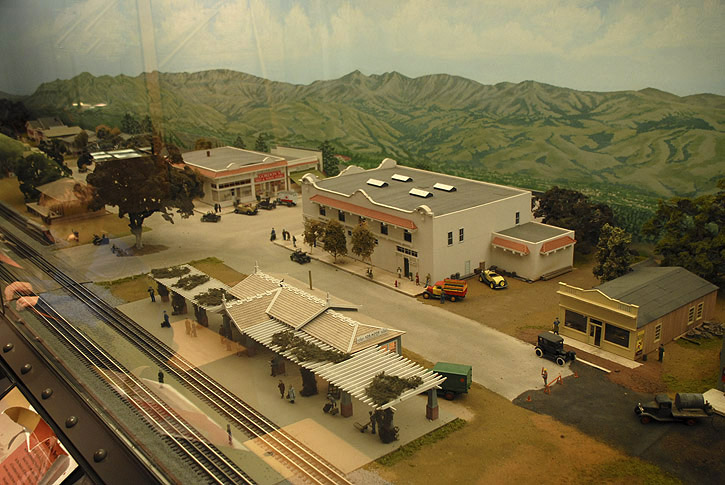
There is a mind-boggling level of detail in this display. Next to the train tracks, there are a few hobo guys. (Shooting in low light through glass can be be a bit blurry, sorry.)
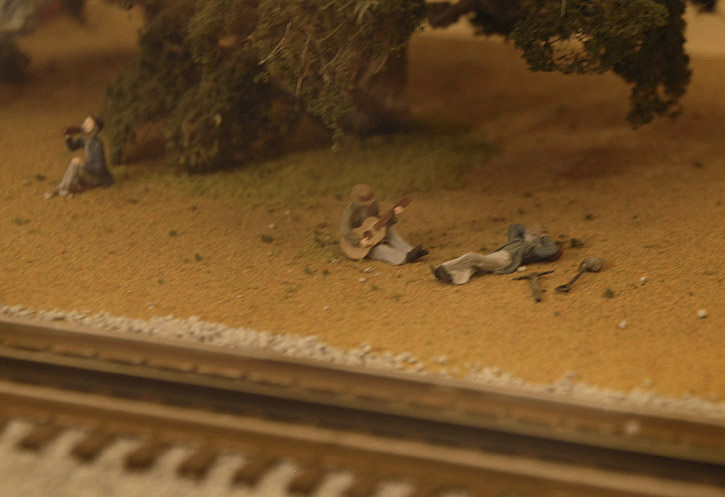
There's a guy who fell out of a sidecar, it looks like.
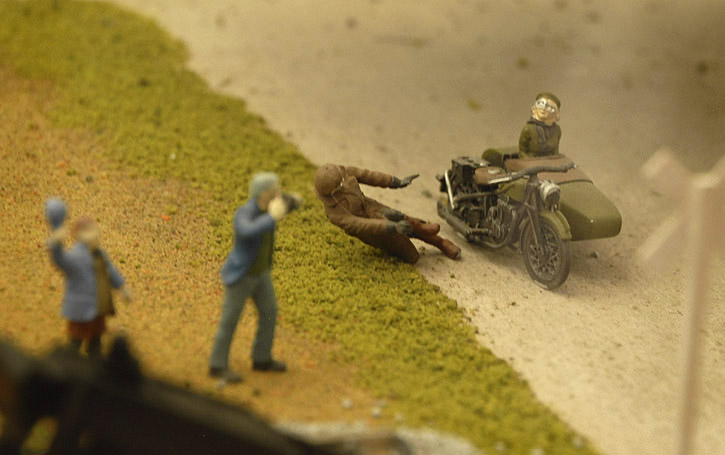
There are ditch-digging guys.
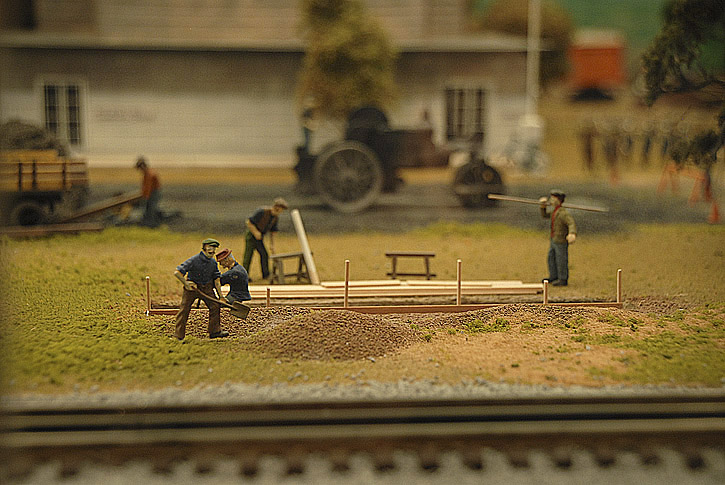
Here's a commuter guy running to catch his train.
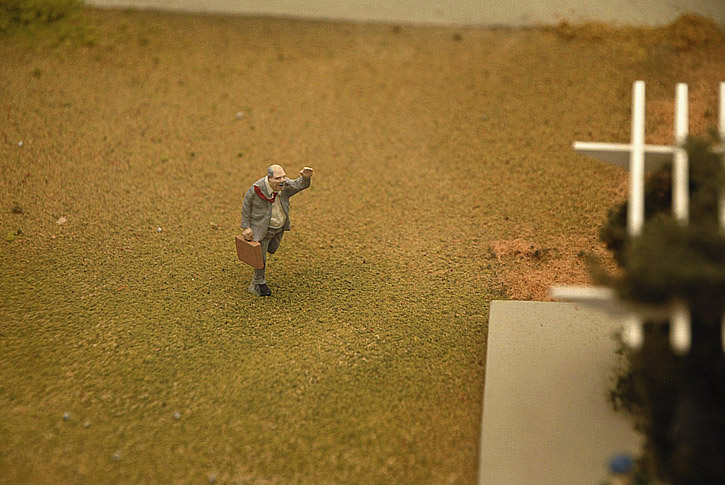
Here's a mailman guy being harassed by a dog.
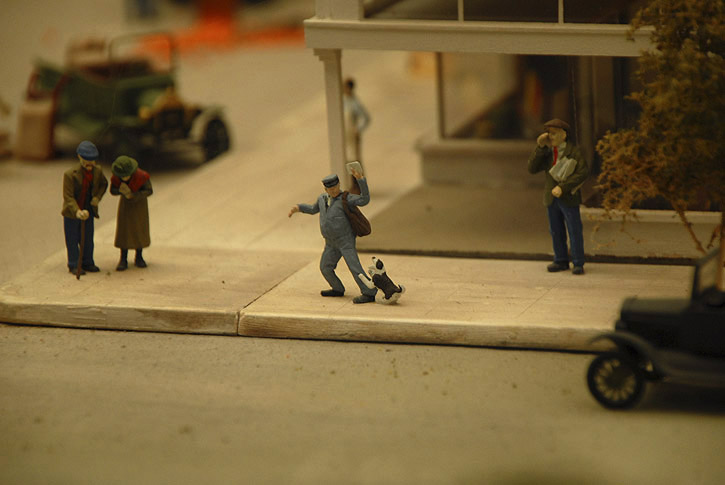
Did they get the number of stars right?
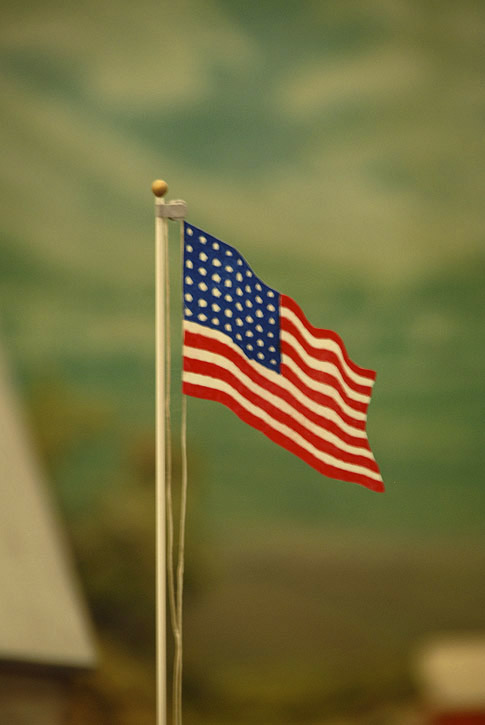
Yes!

A couple has a blurry embrace at the train station.
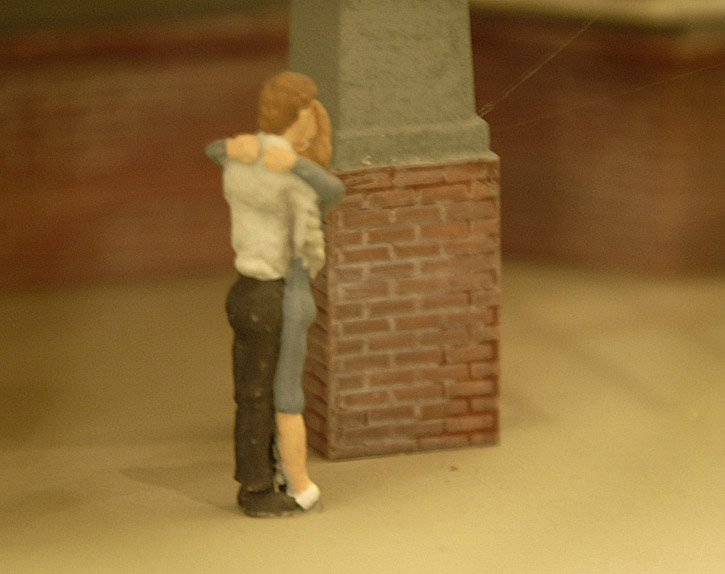
Oh noes! Apricot guy spilled a crate of his apricots.
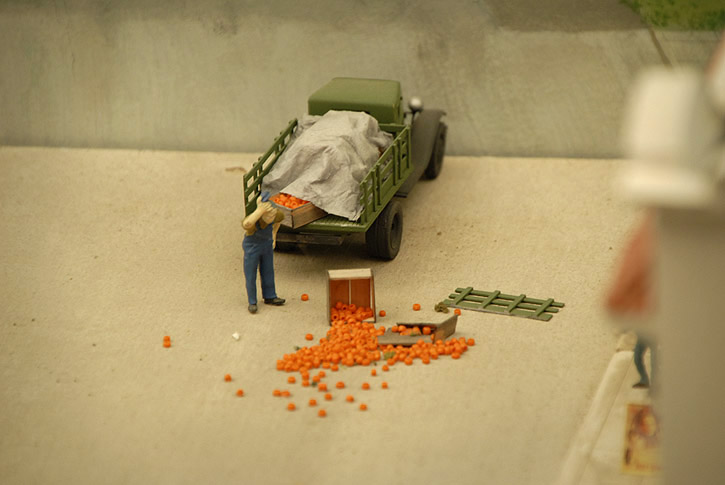
The museum's gift shop had some Easter items in it, including this bunny.
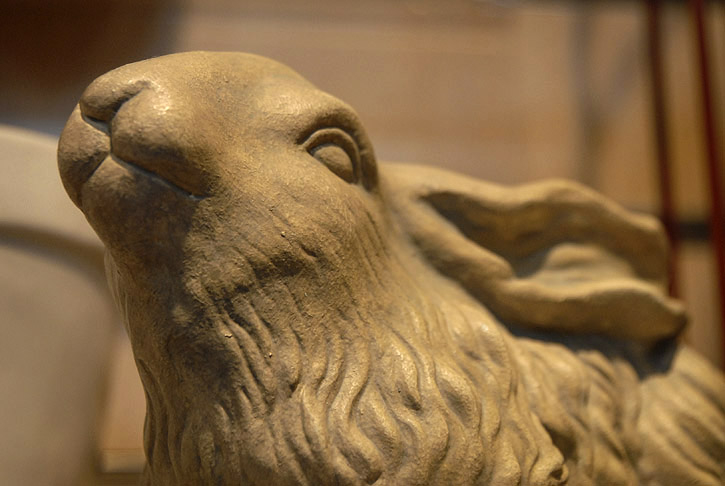
Soon to be a major motion picture, I'm sure.
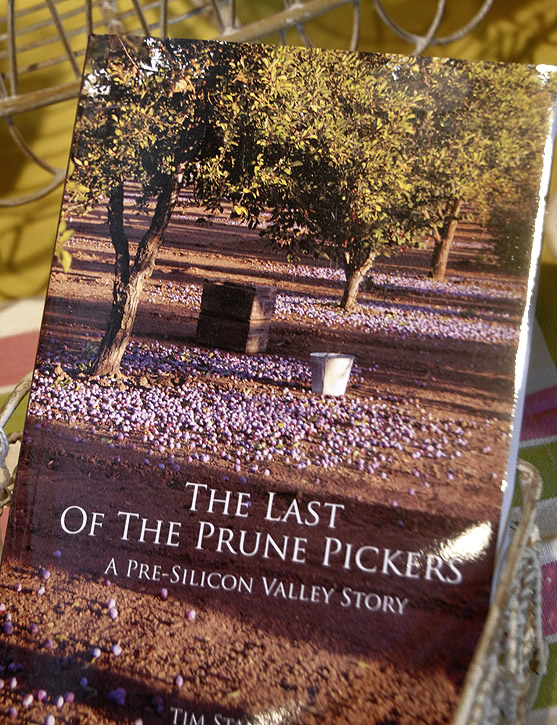
A deck of cards caught my eye.

(No, we didn't buy them.)
.
On Saturday we got a very brief let-up from the storm that lashed the Bay Area with heavy rain and winds, a tornado, and a waterspout. D. and I chose an indoor activity just to be safe, and we went to the Los Altos History Museum, where I took these pics.
Rainy, gloomy day.

The museum's current exhibit is Touching Lives: The Duvenecks of Hidden Villa. Originally from Boston, they left behind the aristocratic New England society of the 1920s to start a ranch in the hills above Los Altos and became social activists, progressive educators, and ardent environmentalists.
In addition to turning their ranch into an environmental education preserve, the Duvenencks founded a progressive school in a nearby town and the Loma Prieta chapter of the Sierra Club. Their interests in social justice led them to open the first youth hostel on the West Coast and the first interracial summer camp in the U.S. They offered hospitality to American Indians and helped Japanese-Americans interned during World War II. They also started an organization that helps the families of prison inmates. This exhibit honors their achievements and gives us a peek into daily life at Hidden Villa.
This is a life-size photo of the grand fireplace at Hidden Villa (life-size photo coincidentally taken by D.), mounted on the museum wall.

The mantel is real, but the rest of it is D's photograph. It looks 3-D, doesn't it?
Some of the (real) books on the (real) mantel.

One presumes these are some of the actual books the Duvenecks had on their mantel at Hidden Villa.

This is Charlie. He liked to chase cars and dogs and anything that came up the road to the ranch. It was a turf thing, apparently.


This is the Christopher Award Josephine Duveneck got in 1978. These awards salute media that “affirm the highest values of the human spirit.”

Some of Frank Duveneck's World War I Army field manuals.

The Duvenecks worked to aid Japanese Americans when they were released from internment camps after World War II. This suitcase shows a sample of the things Japanese people brought with them to the camps.

The Duvenecks were world travelers. The thumbtacks in this little globe show some of the places they've been.

A piece of stained glass from their dining room. It looks so 1970s.

Part of a typical place setting in the Duveneck dining room.

Hidden Villa is now a non-profit educational organization, dedicated to studying and sustaining the environment, and promoting social justice.
After we leave the Duveneck exhibit, we head upstairs to the permanent exhibit, "Crown of the Peninsula," and on the way pass an antique quilt.

"The Crown of the Peninsula" examines how the land of Los Altos has been used over thousands of years from Ohlone times to the era of Silicon Valley businesses. We begin with the Costanoan Ohlone Indians, who lived here for thousands of years, barely altering the original landscape. This is a replica of one of their tule boats, made from tule rushes that grow in the marshes ringing San Francisco Bay.

Yes, it's vertical.
Some stone tools used by the Ohlone.


This map shows the different habitats in the local watershed, from the Santa Cruz Mountains to San Francisco Bay.

The arrival of the Spanish devastated the native culture and changed the face of the land. We see a couple of examples of items commonly found during the Spanish colonization and Mexican land grant eras.





During the American era, ranches, orchards and the railways flourished. Apricot growing was big business in and around Los Altos leading up to World War II. Remnants of the original orchards still exist here and there.


Here's a pic of some dapper guy. I don't know who he is or why his picture is here, but he is quite dapper.

An early railroad map.

The arrival of the railroads had a dark side -- the unchecked power of the Southern Pacific railroad thwarted small land-ownership that was the intention of the Preemption and Homestead Acts. The railroad often drained the resources of farmers and shippers, driving them into bankruptcy. The last train to run through Los Altos was in 1964. The train tracks are now the site of Foothill Expressway.
During the Depression in the 1930s, the Altos Land Co. had a difficult time selling land. Since a lot was about the price of a set of dishes, the company conducted a promotional contest that took place in San Francisco movie theaters. The winner could choose a set of dishes or a piece of Los Altos land. Most people chose the dishes.

Wouldn't you like to be able to buy a plot of land for the price of a set of dishes?
As the town grew, so did controversy.

At the "family trees" exhibit featuring recent Silicon Valley residents who have played a role in transformed the area from ranches and orchards into what it is today, we see the Duvenecks in their later years.


Then we move on to the heart of this exhibit -- a replica of downtown Los Altos in 1932 that features a working model railroad.



There is a mind-boggling level of detail in this display. Next to the train tracks, there are a few hobo guys. (Shooting in low light through glass can be be a bit blurry, sorry.)

There's a guy who fell out of a sidecar, it looks like.

There are ditch-digging guys.

Here's a commuter guy running to catch his train.

Here's a mailman guy being harassed by a dog.

Did they get the number of stars right?


Yes!

A couple has a blurry embrace at the train station.

Oh noes! Apricot guy spilled a crate of his apricots.

The museum's gift shop had some Easter items in it, including this bunny.

Soon to be a major motion picture, I'm sure.

A deck of cards caught my eye.

(No, we didn't buy them.)
.